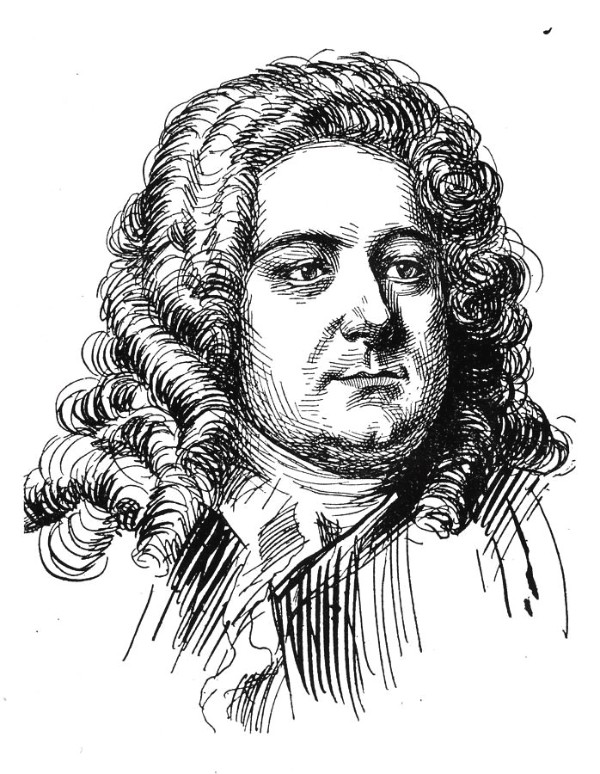Countless scholars, performers, and conductors have asked the almost impossible question of how Bach’s music sounded when it was performed for the first time. This question really caused a great stir some decades ago with Joshua Rifkin suggesting that what Bach meant by chorus was not a whole bunch of enthusiastic singers but a set of soloists. Wow, that’s certainly different from what we had been used to hearing.
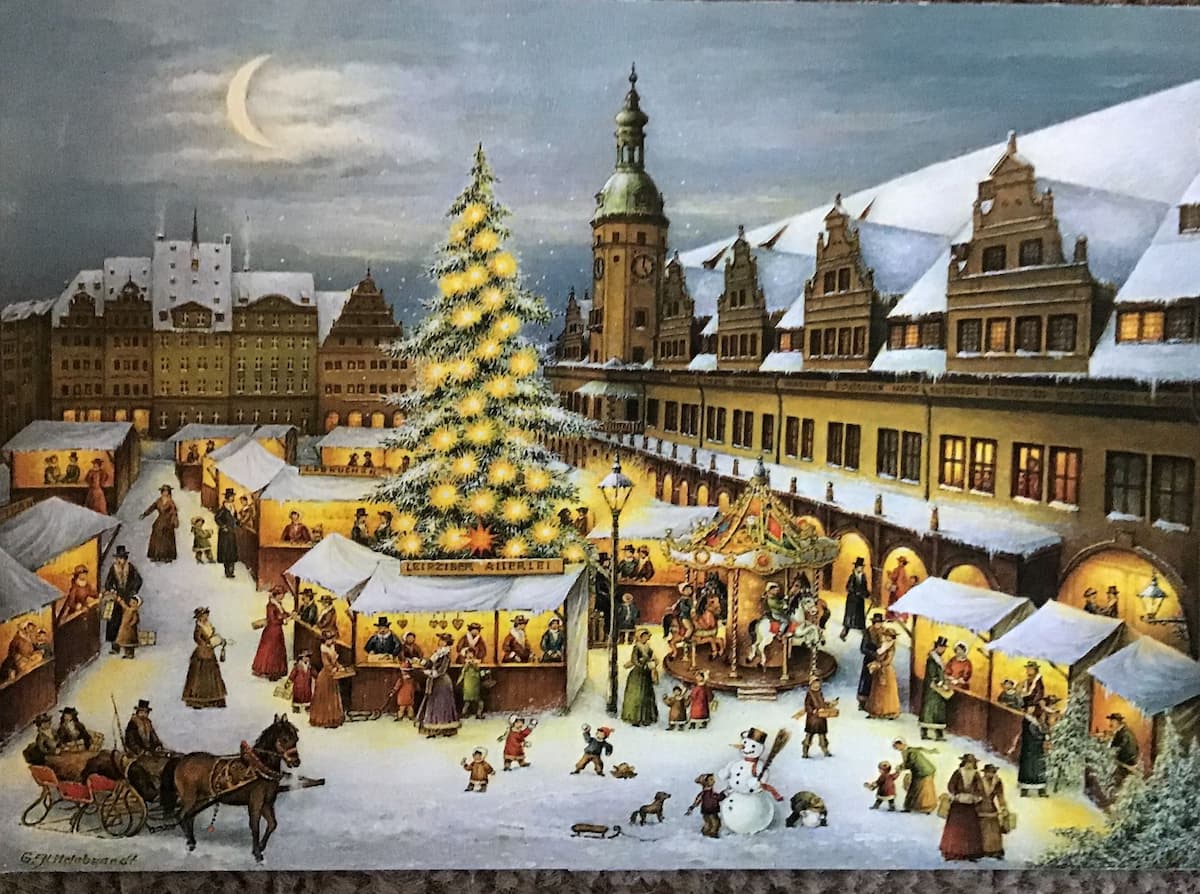
Christmas at Leipzig City Hall
Since Bach’s choral movement have generally four vocal parts, soprano, alto, tenor, and bass, it really only takes four singers to perform them. Bach was responsible for the choirs of four Leipzig churches, and he writes, “each choir must have at least three sopranos, three altos, three tenors and as many basses. Four would be better.”
So did Bach mean that three singers would combine on a part, or was he simply looking at a pool of singers so that he would always have enough singers, even during pandemics, to present his Sunday cantatas? This question will be debated for some time, I am sure, but the fact is that Bach composed a huge number of choral masterpieces. This Christmas Season, we decided to look at 5 Magnificent Choruses from the Christmas Oratorio.
Johann Sebastian Bach: Christmas Oratorio, “Ruler of Heaven, hear the murmur”
Ruler of Heaven, hear the murmur,
let the dull songs be pleasing to You,
when Your Zion exalts You with psalms!
Hear the delightful praises of our hearts,
when we acknowledge our present awe of You,
since our pilgrimage has been confirmed!
I decided to start this blog with a performance of a chorus number where each part is sung by only two singers. What is fascinating, of course, is how the balance between the instruments and voices is actually drawn towards the sung word. The chorus “Ruler of Heaven, hear the murmur” is found in the third part of the Christmas Oratorio, and it is the last of the three cantatas for the Christmas feast proper. This cantata with text by an unknown librettist, includes reflective recitatives and arias, and stanza from Lutheran hymns to celebrate the adoration of the shepherds.
This chorus is once more recycled from an earlier secular cantata, now scored in full splendour with a trio of trumpets, drums, oboes, flute, strings, and continuo. Once again scored in the celebratory key of D Major, the same chorus is repeated at the end of the cantata, concluding the three days of Christmas.
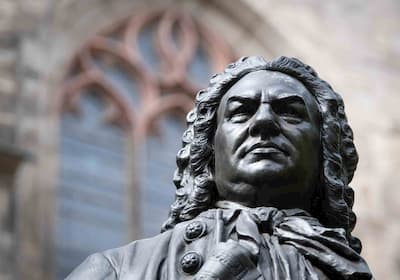
Johann Sebastian Bach © Alamy
It has been suggested that this statement of finality suggested that Bach viewed the oratorio in two sections, each containing three cantatas. The structure of this movement is simplicity itself, and each section has the same symmetrical proportions. It is a beautifully rousing masterpiece, and despite its brevity, it is one of my 5 Magnificent Choruses of the Christmas Oratorio.
Johann Sebastian Bach: Christmas Oratorio, “Rejoice, exult, arise”
Rejoice, exult, arise, praise the days,
extol what the Highest has done today!
Cease hesitation, banish complaint,
join in with rejoicing and exultation!
Serve the Highest with glorious choruses!
Let us revere the name of the Sovereign.
If you are looking for a truly magnificent chorus in the Christmas Oratorio look no further than the opening “Rejoice, exult, arise, praise the days.” Presented on Christmas day, the text describes the birth of Jesus. The librettist is unknown, and after the opening chorus, the story is told following the Gospel of Luke, interspersed with reflective recitatives, arias, and chorales.
For his musical setting, Bach paraphrases music taken from a secular birthday cantata. The text for the original chorus called upon, “drums, trumpets, and strings to fill the air, in order to celebrate the Queen’s birthday.” This might very well be the reason why this chorus opens with the timpani or kettledrums alone. The extended opening ritornello presents the musical material of the entire movement in changing and sparkling instrumental colours.
Bach relied on an extended complex ternary form, with the opening section featuring the voices in unison or a homophobic texture. The texture quickly becomes contrapuntal with this opening section repeated with some modifications. Some scholars have suggested that Bach found this dramatic way of beginning with reduced forces and gradually increasing the intensity of the operatic features that transferred from Dresden to Leipzig. As such, this magnificent chorus could simultaneously serve as the vehicle for a mortal Queen and the Lord.
Johann Sebastian Bach: Christmas Oratorio “Glory be to God”
Glory be to God in the highest
and peace on earth
and a happy occurrence for humanity.
In the opening chorus of the Christmas Oratorio, Bach pulled out all the musical stops to create sheer breathless excitement fitting to one of the two most significant events in the Christian calendar. The second part of the oratorio “And there were shepherds in the same environs,” deals with the annunciation to the shepherds, once again following the Gospel of Luke.
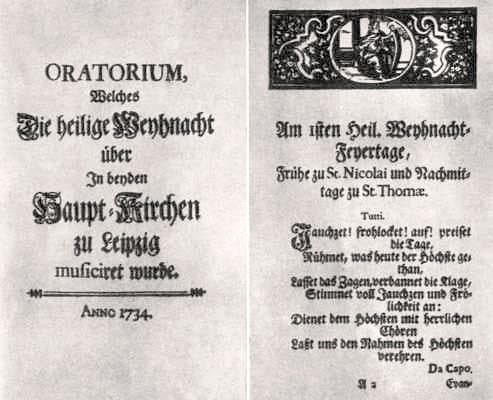
Bach’s Christmas Oratorio BWV 248 Libretto
This cantata is structured in 14 movements, and surprisingly it opens with an instrumental Sinfonia. Scored in triple meter in siciliano rhythm it signifies the stillness of the nightly scene, or according to Albert Schweitzer, “a concerto of the shepherds playing oboes and the angels playing strings and flute in unison with the first violin.” Significantly, it is the only purely instrumental music in the Christmas Oratorio.
The chorus movement “Glory be to God in the highest” sounds towards the end of the cantata. The instruments serve an entire accompaniment function, and the choir and orchestra perform together from the first note to the last. The text is treated in the manner of a motet, the first section about “Glory” based on dense polyphony, the second about “Peace” with music set over a pedal point, and the third announcing “Goodwill” featuring lively themes full of coloratura. This is a powerful chorus of angels, and heavenly glory is beautifully represented in Bach’s magnificent music.
Johann Sebastian Bach: Christmas Oratorio, “Glory to You, Oh God”
Let honour be sung to You, o God,
praise and thanks be prepared for You.
All the world exalts You,
since our well-being was Your pleasure,
since today
all our wishes have come to pass,
since Your blessing so gloriously delights us.
The chorus that opens the fifth part of the Christmas Oratorio, “Glory to You, Oh God” is surely one of the most joyous and ebullient choruses of the entire oratorio. Conceived for the Sunday after New Year, it is a short and bouncy affair scored for just strings and two oboes.
The entire movement builds from two figures, one presented in the oboes, the other immediately following in the strings. Both ideas are used as the basis of the initial choral entries. This sense of call and response creates extensive rhythmic animation and you can almost feel a large crowd gathering and proclaiming the glory of the Saviour.
Bach probably composed the opening movement of a cantata and then proceeded linearly to the end. He carefully planned each cantata, especially its tonal structure, well in advance of writing it down. The Christmas Oratorio begins and ends in the key of D, the key for trumpet fanfare. Part 1 moves between the keys of D and G, and Part II opens with the unrelated key of F, moving to A and finally returning to D.
Johann Sebastian Bach: Christmas Oratorio, “Lord, when our proud enemies snarl”
Lord, when our proud enemies snarl,
then grant that, in firm faith,
we can look for Your help and strength!
We will trust in You alone,
thus we can escape the sharp claws
of the enemy unscathed.
The final cantata for the Christmas Oratorio, “Lord, when our proud enemies snarl” was composed for Epiphany, the sixth and final part. And with the opening chorus, we have come full circle and returned to the tonality of D major. Bach’s choice of keys is grounded in Lutheran theology, with key signatures acquiring allegorical significance.
This theory associated keys with sharps as divinity and keys with flat signatures with humanity. A conductor writes, “in the Christmas Oratorio, both cantatas and individual movements are set in keys that reflect movement between the divine and human aspects of Christ as well as the divine aspirations and humble circumstances of humans.” The text completes the narrative of the Three Wise Men announcing the arrival of the Saviour to the world. No wonder Bach brings back the trumpets and the drums in two chorus movements.
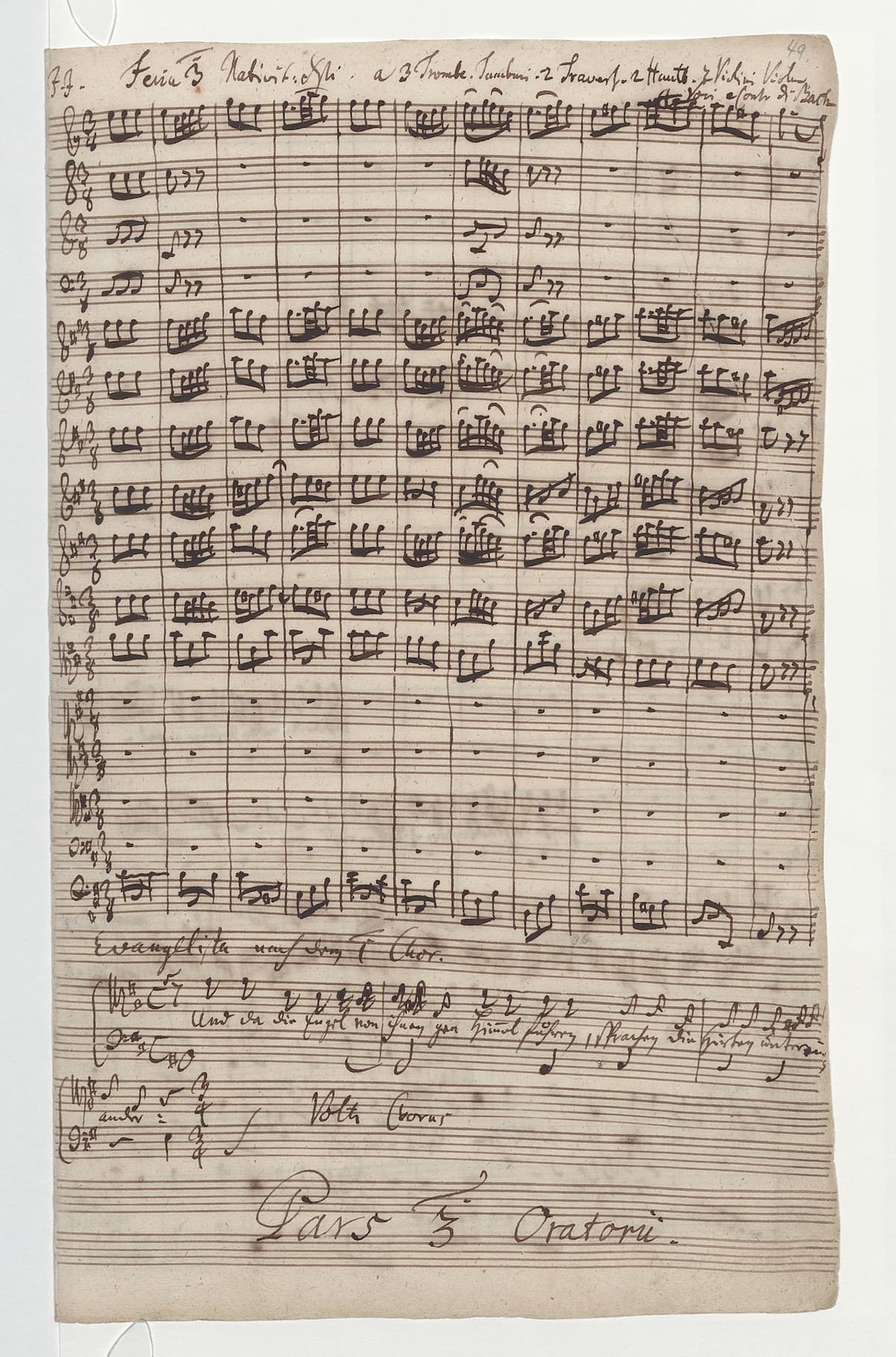
Bach’s Christmas Oratorio BWV 248 opening chorus
Much of the music seems to originate in a now-lost cantata, and the movement is organized around a series of fugal expositions. Now that’s what I call a celebratory and blazing conclusion. Yet, as we are looking towards the Christmas Season in 2023/24, the celebrations might be muted indeed. So I decided to add the heart-warming “Sinfonia” as a bonus track. We can only hope that this lovely dance of humans and angels might finally bring some peace and understanding to humanity and to the world.
For more of the best in classical music, sign up for our E-Newsletter

